Share your knowledge & learn from experts
Because prepping and community go hand in hand
Minor prepping victory: Perennial Fruit!
I was inspired last year by Josh’s review of “The Resilient Farm and Homestead”. I love the author’s take on improving resilience and regenerative systems, and seeing what we can do to provide more for ourselves. e.g. Falk says
> “Self-reliant households are the basic building blocks of any culture that is viable over the long term”> “If our goal is a peaceful, just society, self-reliance at the home and community levels must be a central focus of our lives”
I have been reading and learning about permaculture over the past few years. We don’t have a lot of space available, but last summer I decided to see what I could do in my own small life. I spent many hours of research learning what resilient, perennial species might grow well in our area (gardening zone 3), and spoke with several local gardeners and permaculturists on what food, plants, and species do well for them.
I landed on two perennial fruit bushes: saskatoons (also known as juneberry or pigeon berry), and haskaps (also known as honeyberries).
Both of these plants are hardy down to gardening zone 2, and both produce perennial fruit. They don’t seem to need a lot of care. When fully grown the bushes should take up space roughly five feet by five feet (depending on variety), which is great for me as they won’t get out of hand. If you’ve never had them – haskaps are similar to a long blueberry, though usually a more tart flavour.
I took a hard look at the yard space around our house and was able to free up enough space to plant four bushes – a path roughly five feet wide and twenty feet long, wrapping around a garage building next to our garden. It took some solid work with a five pound pickaxe and a sturdy shovel to dig deeply enough to plant them. But growing up doing manual work on a farm I find that kind of labor feels rewarding.
I have been attentively watering and working to care for the bushes since last year. During the hottest summer heat they took quite a bit of water each day; part of the reason I was motivated to set up a water barrel and system for rain capture. I did not expect the bushes to fruit in their first year. Haskaps are a bit finicky to plant and cultivate – you need specific varieties next to each other in order for them to pollinate. What’s more I discovered they are quite difficult to source and find – it took several months of hunting and calling before I found a greenhouse nursery that even carried them!
However, this week it all paid off: I was rewarded with a first harvest of perennial fruit!
This first picking was roughly one cup of berries:
It may be small, but this feels like a wholesome success. Is it a large amount? No. Will it feed an entire family? No. But it is more than zero. And it is hopefully renewable, and free. I have been able to build and introduce some valuable habitat, and add some flavour, nutrition, and variety into my meals.
One step forward!
Best of luck to everyone with your own gardens and journeys.
(edit: I have edited one of the photos and increased the contrast to make it easier to see)
Read More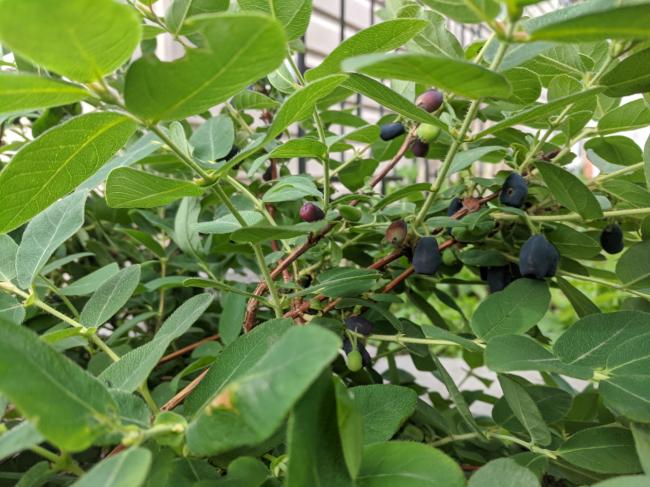
New affordable online pharmacy saves people thousands on life saving medicine
You may have seen Mark Cuban on Shark Tank as the famous billionaire investor/businessman. He recently opened up an online pharmacy that is trending all over the news right now with the amazing cost savings that it is offering to people. Instead of selling drugs for ridiculous amounts, they only mark it up 15% (still a healthy profit for them). A traditional pharmacy may charge you or your insurance company $9657, but at this place it is only $39. Isn’t that insane how much of a savings that is for you? Important medications are now accessible to people who may have just gone without, rationed, or went bankrupt trying to stay alive.
If you need a lifesaving prescription medication, check out costplusdrugs.com and see if you can get it cheaper on there.
They don’t take insurance cards to pay for the drugs, but the savings are still so incredibly good that you might end up paying less for the same medication then you were with your co-pay or deductible.
It is easier to store up some extra $40 medication than it is a $9500 one. Hopefully this allows people to not only have what they need, but save some up for a rainy day if there are supply chain issues, job loss, etc.
Read MoreBest modular bag for car?
Hi guys,
I’m pretty new to prepping and have been reading a ton of stuff on this site. I’m in the middle of assembling my kit but I really could use some recommendations for a bag. I have almost all of the items of a level 3 kit stored throughout my truck but scattered throughout. I’m ideally looking for some sort of modular bag to use that I can attach smaller packs or bags on/in based on the situation I’m in. For example, I want to keep all my clothes/hygiene in a small day pack and possible use this also as a gym bag or emergency change of clothes for work. I also want to be able to strap a sleeping bag and tent if I’m in a bugout situation but leave in the truck if I’m just trying to get home. I also have a rather large molle ifac (9”x7”x5”) that would be nice to strap to the bottom or side but keep easily assessable.
I am leaning toward an Osprey Aether AG 60 or a Deuter Aviant Voyager 65+10. Both of these have removable daypacks but I’m worried they will take up two much space in my truck (won’t fit under the backseat)
Does anybody have a good recommendation for a bag in the +/-40L range with attachment options for top, bottom and sides (or separate daypack options)? Conversely any recommendations for internal bag pouches?
Thanks
Read More4th of July safety tips
Following the spirit of Peter 44’s topic the other day How to survive this nasty heat wave of 110+ degrees, I wanted to compile some 4th of July safety tips. Really?? 4th of July safety tips? So don’t eat too many burgers and hot dogs and maybe wear safety glasses at the parades so people on the floats don’t throw candy and hit you in the eye? Well… there are more dangers to this holiday than and upset stomach from eating too many burgers, so here are the ones I came up with and comment below if you have any other tips or things to add to the ones I do.
If lighting fireworks out on your driveway or in the middle of the street have a garden hose, fire extinguisher, and a 5 gallon bucket full of water ready. Pull cars away from where you will be lighting things and take a minute to look around your street for flammable brush, boxes, or anything else that may be nearby. If a firework doesn’t go off, don’t disassemble it or try to light it again. Wait 30 seconds and then walk towards it with your hose and drench the sucker. Then submerge it in your 5 gallon bucket of water. In fact, take all of your spent and dud fireworks and store them in that bucket of water over night. In the morning drain the water and then throw away the firework shells. Having a first aid kit nearby can be handy in case someone gets a minor burn from a sparkler. Clear out any dry brush and material from your property. You don’t want a stray firework from your neighbor to catch and take down your house. See the below chart for a visualization of the danger of the 4th and wildfires. Bring dogs inside to prevent them from getting scared and running away If you are aware of any Veterans in your neighborhood think twice about lighting fireworks near their home or sit down and ask if they are okay with it. I’ve heard some Veterans struggle with PTSD and dread the 4th because it is a trigger. If you are grilling, make sure not to grill next to your house or a fence because the heat could damage the wall or set it on fire. Don’t be stupid. A neighbor kid the other year lit a ground bloom (also known as a Flower) firework in his back pocket thinking it would be funny and it melted his pants and fused the fabric to his butt and gave him a severe burn. Don’t have roman candle fights with each other, it’s fun but stupid.Take the steps now to be prepared for this potentially dangerous holiday and have fun! Happy Independence Day!
Read More
Does anyone have experience sprouting seeds to eat?
In the spirit of trying to eat more healthy, I want to consume more vegetables. There are many vegetables though that I just do not like or don’t sit well with me, and I get sick of the others pretty quickly. I’ve also heard that the same head of lettuce today is less nutritionally dense than that my grandparents ate because soil is losing it’s minerals. The idea of sprouting my own seeds and eating those may be the way I can eat as little vegetables as possible but still get the nutrition I need. Don’t sprouts have a ton of nutrition per ounce compared to a full grown vegetable?
I’ve seen them talked about with survival groups often as a way to get fresh veggies without having to go outside, have sunlight, or even put in much work. Could be a good SHTF nutrition supply.
Does anyone have experience sprouting their own seeds? I see there are two methods, using trays or in a mason jar with a mesh lid.
Also, where are cheap places to buy spouting seeds?
Thank you all!
Read More
FIFO can racks for the pantry
I took a chance on these little racks I found on Amazon, bought two, and quickly decided to outfit the whole shelf with them. They are literally shoe-horned into the shelf, but they fit, wall to wall. I’ll never go back to boxes for regular size cans again. I will be gradually adding more.
Read More![20220625_132953[1]](https://theprepared.com/wp-content/uploads/hm_bbpui/87273/aka01alq47j0t2t55utg6u5kk50rtoo3.jpg)
Wine for the apocalypse
So my husband bought a wine rack for the basement this winter and has been having fun picking out moderately priced wines and filling it up. I didn’t think to add it to my emergency food spreadsheet until just now! I have a formula in the spreadsheet that calculates how many days worth of calories we have, and this gave my supplies a nice boost.
This will be a part of our rotating pantry so hopefully we won’t have any wine go bad. But I’m seeing confusing info on the shelf life of wine. Fine wines are supposed to last 20-30 years when stored properly, while other wines are good for 2-3 years. What’s the difference?? These are not fine wines and many have screw tops. Our storage conditions are not ideal – no temperature extremes but also not the ideal 55 F degrees. Maybe 65 in the winter, 75 in summer.
Anyone have any insight/experience in wine storage?
Read MoreControlling cooking food odors whether SIP or Bug Out conditions
Controlling food odors would be an important consideration for anyone living in the city close to others or even in a rural area if hungry people are searching for food. I’m not sure, but it seems possible that very hungry people would have a heightened sense of smell.
I ran a test on how much and how far food odors wafted from my home some years ago as part of scenario prepping.
There was no exhaust fan used to blow the odor outside. The item I cooked on top of the stove was dried red kidney beans. There was nothing added to the beans and water. It was to cook them only before making chili later.
While the beans simmered, I took a walk outdoors and was shocked by the smell outside my house. I never thought that plain, unseasoned beans would give off that much smell. More shocking was how far the smell travelled on a day with low wind conditions.
I wondered what the result would have been had I used an exhaust fan and blew more of the smell outside.
This led me to think that smell has to be considered in prepping. I am still trying to figure out how to control odors while cooking. Food can be eaten cold out of the can, but in an emergency of long duration, it will be necessary to cook food. Even bugged out, food odors from an outdoor meal could be a problem.
One last part, I have also considered food odors on my hands from preparing food. In times of scarcity, looking well fed and smelling of garlic might tip off people that you have preps. Lemon juice can neutralize the garlic and baggy clothes can hide a lack of weight loss, but I am still trying to find a solution to reducing or eliminating food odors.
Has anyone considered this and if so, any thoughts on how to deal with this issue?
Thanks in advance
Read MoreHow to survive this nasty heat wave of 110+ degrees
Although I don’t live in the Pacific North West PNW, I am hearing a lot of chatter from people about the extreme heat that they are suffering through. I wanted to offer my help through this forum by sharing some thoughts and ideas on how to stay cool and get through this. Feel free to pitch in your tips and tricks as well if you have some.
If we have any PNW members of this forum, I’d love to hear how things are going for ya.
-Move to a smaller room at the center of your house. It is easier to cool a small room versus the entire house.
-Add tin foil or cardboard on windows to act as extra insulation and repel the heat of the sun. Look at installing solar screens on your windows for a cleaner look.
-Get a battery operated fan that will run off of the same batteries that your power tools will. If power goes out, this can keep you cool. Mist yourself with some water and then sit in front of the fan for extreme cooling.
-Keep curtains closed
-Drink tons of water. Keep up electrolytes.
-Hang out in the basement if you have one
-Use patio umbrellas or storm shutters to shade your windows
-Rinse off your arms, hands, and face with cool water whenever you go to the bathroom. Take a full cool shower if at home for a quick cool down.
-Stock up on fans, AC units, etc during the fall because during the summer they will be all sold out and at full price
-Freeze different juices into improvised popsicles. Eating frozen grapes and berries
-Keep an eye on the weather forecast and if you see hot weather coming, make extra ice cubes a head of time.
-You may have to adjust the temperature to a colder setting on your fridge/freezer. Some people are having to add frozen bottles of water to their fridge to cool things down because their fridge can’t keep things cool enough.
-If you need to cook foods, use the oven or stove in the early morning or late afternoon as to not add too much more heat to your house
-Place your clothes in the freezer for the next day, then when you put them on they will keep you cool for a couple minutes.
-Cool your feet in a bath or kiddie pool
-Don’t go outside during the hottest times of the day
-Feed pets refrigerated wet food. Make them popsicles by freezing tuna water or beef broth in ice cube molds.
-If you can’t hold your hand on the asphalt for 10 seconds, then it’s too hot for your dog to walk on.
-For chickens, give them ice chips to peck at or frozen peas
Read MoreBecoming hysterical during an emergency
I have a confession to make… I love watching police body cam footage and other videos online of disasters, emergencies, and horrible events. They are so fascinating and intriguing. I tell myself that it’s for educational purposes to teach myself about what can happen.
A common thing that I’ve noticed in many of the videos is the random lady in the background going absolutely hysterical. It could be a video of a gunman going through a mall or police arresting her boyfriend and most of the time there is some lady just screaming. 😱 Nothing is happening to her, the gun shots may be at the other end of the building, but she is still freaking out. Guys aren’t excluded from this, but they usually manifest it in shouting profanity.
This made me think about when I might be in a bad situation, will I react the same way? What causes someone to freak out like this? Is it from not feeling prepared, lack of mental coping, or is that just what some people do?
I laugh a little at how they react but then tell myself that I might do the same thing if put in that situation. I can’t judge them from the comfort of my safe couch at home when they are seeing horrible things happen right before their eyes.
If there is a way to train myself to not get into this mental and emotional state and understand what causes it though, I think I will be better for it. First off, screaming exposes your location and draws the gunman to yourself. Second, someone that is freaking out that bad isn’t thinking clearly and that leads to mistakes and even more danger.
What are your thoughts on all of this?
Read MoreHuman urine as garden fertilizer
As a gardener and prepper who strives to be ready to become self sufficient if necessary, fertilization after the SHTF is a concern of mine. I address this in several ways, such as large compost piles and having farm animals, as their aged manure makes fine fertilizer. I also plan to grow companion plants, such as the 3 sisters to help address the issues of fertilization & water retention in the soil. Wonder how many folks have prepared to collect their urine during a crisis? Urine is full of nitrogen, potassium and phosphorus, which are the nutrients plants need to thrive–and the main ingredients in common mineral fertilizers. It is in liquid form which also helps the plants with hydration. Unlike feces (human or animal), which can carry bacteria like salmonella and E. coli, urine from healthy folks poses no health risks as it is practically sterile when it is eliminated from the body. When dying of thirst, one can actually drink their own urine to survive.
We all pee around 150 gallons per year… beer drinkers more. If say you are in a survival group of 10 people, that is 1500 gallons of premium fertilizer that could help y’all survive. Just wanted to pass this info on for you survival gardeners that might have never considered this source of fertilizer. Most of us store foods in 5-6 gallon plastic pails. Once empty, you can attach a toilet seat with lid for females to contribute. I keep two in stock.
Read More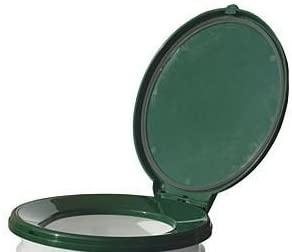
Let’s make the ultimate emergency reference guide for a bug out bag
In a previous forum thread talking about light weight gear, I recommended that people ditch the heavy and bulky survival manual in their bug out bag, store most of that info in your noggin, and maybe have a laminated 1/2 sheet sized reference guide as a reminder or for those hard things to remember.
Another member asked if I or anyone else has a 1/2 sheet reference guide like this, and to be honest, I don’t. But let us change that and come together and come up with some things to add.
What do you all think of the following list? What do you like, dislike, or want to add? I’ll do all the work and compile it into a document, but I need ideas of important things you would find helpful on a 1/2 sheet size reference guide.
Here are some of my ideas:
Contact info for someone out of town, for your child’s school, spouse’s workplace, and other important numbers like doctor, insurance company, or utility company. Emergency meeting place location and instructions Diagrams of how to navigate using a wrist watch Diagram of how to set a snare Diagram of knots Escape routes Important radio frequencies Read MoreDIY 12V shower
During our last extended power outage (8 days, February ice storm), we used a little Zodi camp shower that uses four D-Cell batteries. It put out a pathetic little dribble of water. We later got the bright idea to build a better shower.
This unit consists of a 1gpm RV demand water pump, an RV handheld shower head with on-off button (the RV pump turns off when the button on the shower head is pushed off (there is an extension hose attached), a 3/8″ uptake hose with filter, an on/off switch and a plug that fits a corresponding socket on the battery. We have a big deep cycle battery that we got to maintain tropical fish life support (no longer have the fish). The little filter on the uptake hose was pilfered from a small drip irrigation filter, the open end was sealed with a little plastic wrap and an o-ring. The uptake hose is dropped in a bucket of warm water and clipped onto the side of the bucket so it won’t fall out. All contained in an old tackle box.
The pump delivers a very refreshing shower, of just the right pressure!
Read More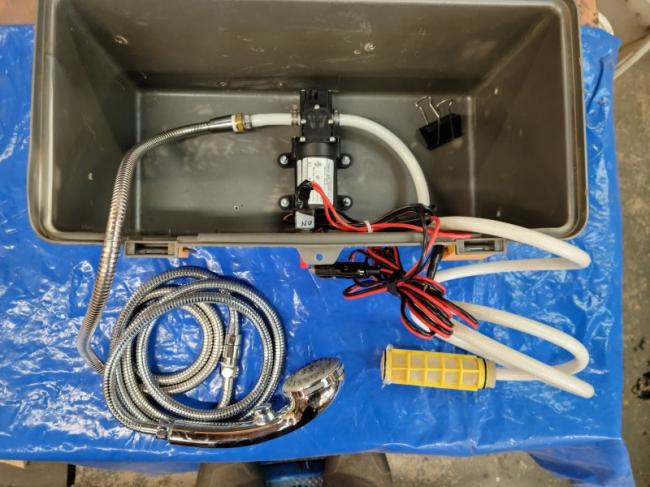
What to do if your elevator gets stuck
You are running late for an important interview and rush into the elevator and push your desired floor button. While catching your breath and adjusting your shirt that just became untucked, you feel a lurch and a squeal. The elevator has stopped but the doors are not opening. GREAT! Just what you needed right!?
In New York City in 2015, 51 people were injured and 5 people died from elevator accidents.
Here’s what to do if you find yourself in this situation:
Push red emergency call button which is connected to a phone line and it should patch you through to an elevator maintenance representative. If this is not working, hopefully your cellphone has enough battery and service to call the building you are located in or the local fire department.
You don’t want to climb out of the top air vent of the elevator car because once you get up there, now what? You would be in serious danger if the car started to move, and you can’t climb up the elevator cables like in the movies because unlike what the movies show, these are coated with a thick layer of grease.
Don’t try and pry open the doors, they might suddenly close on your fingers and even if you were to open them and see that you were not against a solid wall and you were stuck between floors, it’s not smart to crawl out. If the elevator starts working suddenly you will be caught in between and get sliced in half.
There are many safety measures in place for modern elevators that you aren’t just going to fall randomly, you are safe if you just wait.
But… if you are stuck in there for a long time, you might have to establish a pee corner.
To avoid your chances of being stuck in an elevator, don’t enter overly crowded ones that might be reaching their weight limit. If you are already on one and a bunch of people come on, don’t be that guy that say “too full, take the next one”, just pretend that it is your floor and get off and wait till the next one.
If the elevator looks sketchy, overly old, or not maintained well, take the stairs. It’s healthier and safer anyways. If they building you work or live in has an elevator that seems to be out of order frequently or has issues, check with the building manager on when it was serviced last or check with the state and make sure it is kept up to code.
Have any of you ever been stuck on an elevator?
Read More
How long could you survive in the wilderness?
Hey guys! I’ve been lurking on this forum for the past two months and finally have something to share so I created an account.
Came across this article titled: Average person thinks they can survive for 2 weeks in the wilderness — but most can’t start a fire
Like the title says, the average American thinks they can survive for 16 days in the wilderness. But out of 2000 American’s surveyed only 17% felt very confident about their ability to start a fire with flint.
52% felt confident that they could identify different plants, but when challenged and shown pictures of plants like poison ivy, few were actually able to correctly identify plants.
Interesting survey. I wonder what the numbers would be like with the prepping crowd. Are we more confident in our skills and abilities and think we can survive longer? Or are we more aware of what it would take and are realistic that we wouldn’t be able to even survive 16 days.
What they don’t go over is what gear if any are these people provided with. So lets assume that it’s what the average person would have on them on a day hike when they might get lost. Maybe a fanny pack, two granola bars, bag of jerky, water bottle, small cheap LED flashlight, and maybe a small cheap multitool.
So lets figure out what preppers think. How long do you think you can survive in the wilderness? What factors are you putting into your answer?
Read MoreWhen to offer aid to the unprepared
Not everyone has prepping as a hobby or a way of life. Not many have gone through a major disaster or trial in their lifetime that would encourage them to be prepared. But those disasters do happen, and if it does, what is your thought process behind offering aid, help, and assistance to others?
It will greatly depend on the situation, where your preps are at the time, and many other contributing factors, but lets have a discussion of some possible scenarios.
Here are some arguments for giving aid: I believe that most people would like to offer assistance to others and help when they can. This can help grow and strengthen your prepping community and many hands makes light work.
Here are some arguments against giving aid: Your house gets to be known as the new hand-out place. Once you give help to one person, they tell others and you have many people on your doorstep. You become a target because you have supplies and resources when others do not.
Another user on here, Matt Black, made a really great forum post about making Mercy Bags for the unprepared. I think this is a great idea and my family is going to make some to help out others.
Read MoreAmaranth – My #1 Survival Crop
Just joined yesterday and wanted to contribute. I’m a long time prepper, living in north Mississippi. I love to garden. I live on a 20 acre farmstead where we have 4 horses and 9 dogs. My orchard has over 150 trees… mostly apples with some peaches. I also grow blackberries, blueberries & muscadine grapes. I am by no means self sufficient but most of what I grow is what we like to eat & what I would grow in a crisis, if I did ever have to become self sufficient.
IMO, the #1 survival crop is amaranth. It is easy to grow, as for some it is a weed (Pigweed, Palmer amaranth). It handles drought extremely well & needs little, if any fertilizer. Farmers struggle to get rid of it. It was a staple food item of the Aztecs & Incas. It is a dual use plant, in that you can eat the leaves & young stems, plus each plant can produce up to a pound of nutritious seed that can be ground into flour or made into porridge. It is considered a super food, as it is absolutely loaded with protein, fiber, vitamins & minerals. The plants can grow up to 10′ tall. It loves the hot weather and in my garden, I grow it as a summer green. You can use it in most any recipe for spinach or greens. IMO, greens are great crops for survival so I grow them the whole growing season. In cool season I grow collards & kale. In the summer, I grow amaranth.
But what really makes amaranth shine as a survival food has to do with its reproduction. Each plant can produce hundreds of thousands of seeds. I will say that again… hundreds of thousands of seed. So imagine we are in a SHTF crisis and we needs lots of food fast. What other nutritious plant could produce so much food so fast and which crop could provide enough seed to feed a town within 1 generation? Just one pound of seed contains around a half million seed, so anyone can store this seed for possible use.
Yes, I grow and store all sorts of garden seed. For me, my go to survival garden crop is the three sisters… a native American way of growing corn, pole beans & winter squash. Sister corn provides support for the sister pole bean. Sister pole bean, being a legume, puts nitrogen back into the soil for the corn to use. Sister squash provides ground cover to control grass/weeds & to hold moisture in the soil. But during a crisis, when so many would be starving, I think it would be smart to provide seed for others to grow their own food. I can’t afford to provide corn or other seed for lots of families… but could sure offer amaranth.
This summer, once my amaranth plants were around 4′ tall, I harvested a bunch of leaves for my callaloo pictured above. To harvest, I cut off the top half of the plant, where the newest, most tender leaves are located. I wanted to test that if you cut such a mature plant, that new growth would arise. And yes, within a week, vigous new growth started replacing what was cut. In the pic below, you can see where the stalk was cut and see the new shoots. As I said, it only took a week to get all that new growth.
Read More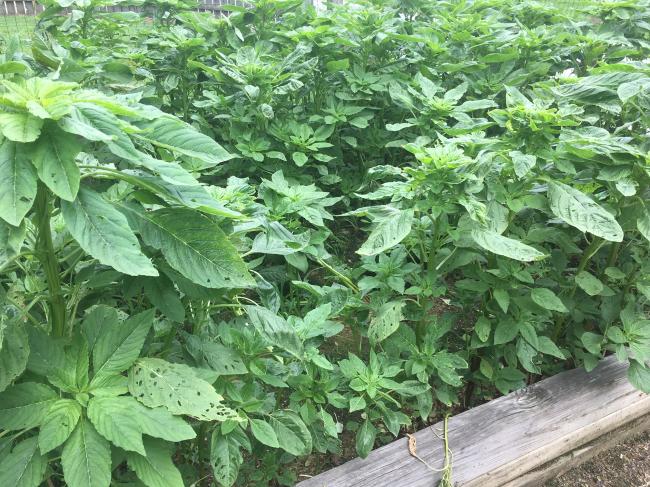
My main worries to end the week (Prices/CPI and other stuff)
My main worries to end the week are:
The economic models the Fed was using in December for predicting inflation don’t seem like they’re suited for the current economic situation. The Fed needs to seriously investigate why these models are wrong and make sure unwarranted assumptions are not sticking around or leading the Fed to be less aggressive than it has to be. We really don’t need the Fed to be too optimistic about inflation right now. Interest rates impact the price at which investors are willing to buy stocks (the other main consideration being company profitability or expected profitability), which is part of why raising interest rates slows the economy and inflation. If food and fuel costs/shortages get much more serious (or “go parabolic”), the Fed can’t do much about that but might feel pressured to raise rates more aggressively than it has to and cause a recession (or a worse recession) without a good reason. Interest rate hikes will not magically produce more fuel and food. There are counter-arguments to media reports like this (I hope those counter-arguments are wrong). If an income bracket literally can’t afford food or food is simply not available somewhere, niceties (and more) go out the window. Yes, we produce food domestically but fewer imported products = more people buy a lower supply of domestic products. (Mods: remove if this is too political, I’m trying to keep left vs. right ideology out of it and focus on the correlation between job approval ratings and crises). Biden’s job approval rating is historically low for a president, and lower approval ratings typically go along with recessions or crises like inflation in the 1970s or the 2008 Financial Crisis. Yes, Trump’s job approval rating was also pretty low throughout his presidency but (not to get too political or get into left vs. right) many people, right or wrong, found him offensive, thought he was too ignorant to do his job, thought he was an agent of a foreign power, or thought he did not respect the US Constitution or separation of powers. Therefore, it makes sense to assume that many people perceive current federal-level leadership as weak. Yes, you should be worried about what people are willing to vote for if they decide the government or economic/social/political system can’t fix their problems and those problems get too bad. Political extremists on the far left, far right, and elsewhere often spend their time sitting around and waiting for a crisis.Suggested preps:
Food (at least 2 weeks, more if possible, like a few months or a year). Assume that food prices could double within the next year, though my baseline assumption is that we will face acute rather than chronic food shortages if there are availability issues. Get your finances in order (or try your best). Prepare for possible civil unrest. Humans adapted over hundreds of thousands of years to survive. Something in the news might shock you, but remember that you will not always feel the same way. The world could turn into a place that you don’t think is worth living in, but there’s a lot that has to happen before you know that for certain. Read MoreI’d like to avoid using a cook kit and just carry ready-to-eat meals in my emergency bags
While building my emergency bag in my car and my one at home to evacuate out with, I am faced with the dilemma of including a cook kit or not.
Pros
Ability to cook freeze dried foods Cook anything I might hunt or gather Boil sketchy water and make it safe Heat up water just as a comfort for coffee, tea, or hot chocolateCons
Additional weight, space, cost Slower to prepare a meal and eat it then just grabbing a granola barI can maybe justify having the cook kit in my home bag because I that will be surviving for a longer period of time, but 100% of the time I’ve needed a meal or snack in my car emergency bag, it has been because I don’t want to stop by a McDonalds and would rather just get something quick and cheaper. So up until now I have just stocked some granola bars that I buy by the box.
What other snacks or meals could I possibly add to my car emergency bag that I can quickly grab and consume? Something that can withstand the heat, be filling, and nutritious.
Read MoreHow has rising gas prices influenced you?
I really thought that we would see a small spike in gas prices with the conflict in Ukraine and then level out, but it doesn’t seem to stop.
Chart from Gasbuddy.com and is the national average.
How has the rising gas prices affected everyone? Are you driving less? Have you bought a more fuel efficient vehicle? Did you switch jobs to commute less?
I’ve been driving much less often and combine all my errands into one trip so that I don’t have to go out. It changes the way I prepare because I need to store more items on hand and sometimes just go without something like bread for a couple days until I build up enough reasons to go out again. I don’t visit family or go out for entertainment as much as I used to either. It feels like I am back under quarantine and is starting to affect my mental health like during covid.
I also rotate through my stored gas cans every 6 months so I don’t have to buy fuel stabilizer, but maybe it would be cheaper to stabilize the fuel because 6 months from now it might be much higher.
Stupid me is going to laugh and be wish for $4.90 gas in 2 months time when it’s then around $6.25 or something.
Read More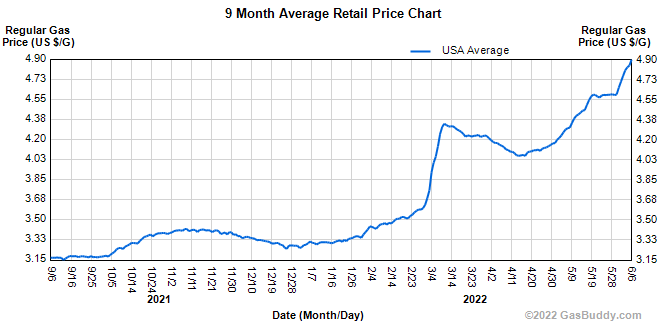
Ever seen a Blue Heron ?
I am blessed to have a mating pair of bald eagles that visit my farm daily. They like to catch my grain fed catfish down in my small, one acre pond. It might be a small pond but it has a large population of catfish, as I feed them every evening… a bit before dark. Most days I have an eagle sitting in a tree, watching over the pond. It is not unusual for a blue heron to be sitting on the dock, hunting for fish itself… just smaller fish. The eagles seem to take the bigger fish while the blue heron goes for the smaller fish & minnows. The blue heron is an odd looking bird but it is perfectly designed to hunt small fish, especially when wading in shallow water.
Yesterday was no different. As I drove up to the pond to feed fish, an eagle was up in a tree above me and a blue heron was on the dock. That bird has gotten smart lately. It used to fly away but it has learned to come back, as soon as I drive off. Within a few seconds of my driving off, before I can get 50 feet away, it now lands on the dock watching the catfish feed. Soon as they are mostly done, it really perks up to hunt the smaller fish eating the leftover catfish food. I took this video yesterday. It is not the best video in the world and certainly not the best viewing angle, but it still shows what I’m talking about. I just love watching nature.
https://www.youtube.com/watch?v=PvLFaKg-etU
Read MoreHow to survive an active shooter
A few months ago I shared what I learned about how to survive a nuclear attack after the Russian invasion of Ukraine. I want to be prepared and know what to do when disaster strikes. The horrible Uvalde, Texas elementary school shooting on 5/25/22 is the 30th K-12 school shooting just this year alone and many more shootings will probably occur. So to be prepared, I wanted to learn more about them and what I can do. This isn’t the ultimate guide, but just what I learned after a few hours of research. Please correct or add to what I have.
The motive of an active shooter is to kill and maim as many people as possible to draw attention to their cause. They often target theaters, shopping malls, supermarkets, and schools because they are considered soft targets, which means they have low security and can include mass casualties of unarmed citizens including women and children. When attending these locations, be on extra alert of any suspicious activity.
Shootings can just be a spur of the moment heated argument that is unplanned or can be a coordinated attack that has been months in the making. In a worst case scenario, multiple gunmen might chain off exits to trap their victims and increase the casualty count, may deploy explosive devices for more damage, smoke bombs to create confusion, wear body armor to increase the time they have to hurt others before they are stopped, and may use modified and automatic high power rifles and other weapons to cause as much death as quickly as possible.
As soon as you hear gunfire, get down low and seek cover. Hesitation will get you killed. The three natural responses to immense stress like this are fight, flight, or freeze. Freezing is the worst, fighting is the next best option if fleeing is not. To avoid the tendency to freeze, play out scenarios in your mind and what you may do if something were to happen, know what gun fire sounds like and maybe even go to a gun range and just listen to what a gun sounds like in person when you don’t have hearing protection on. If you see people freezing and you wish to be the hero, use basic commands, hand signals, commanding voice, or even physically grab and move them to snap them out of the mental roadblock they are stuck on. If they put up a fight or resist, move on and don’t risk your life.
This may sound a little silly, but playing shooter video games and paintball can be valuable learning experiences against an active shooter situation. In these games you will learn how to hide behind cover and move from location to location without getting shot. The times I have played paintball really did feel like a war zone where you don’t know where the bullets are flying from, you have to constantly be moving, and it even teaches you a little on how to fight back. The adrenaline and pain you will experience by getting hit by a paintball is not lethal but will be a strong reminder that you might have just lost your life if this was real.
Avoid piling up with multiple people (like is commonly taught in schools). This just creates an appealing and larger target for the gunman to fire into. A single bullet can also pierce through multiple bodies. Spread out and be a smaller and harder target. Do not “play dead”, there are so many bullets flying around that you can easily get hit. Get out of there as soon as possible.
When entering a building, familiarize yourself with the layout. Know where are the entrances, exits, and places of cover and concealment. Cover is something that can stop bullets like a brick wall or vehicle. Concealment still hides you from being visible but will not stop a bullet, like a curtain or bush. Move from cover to cover until you are able to exit the building. If you do have to move from one cover to another cover and will be exposed in the open for a while, wait until there is a lull in the firing while they are reloading. When traveling down a hallway or open area, stay at least a foot away from the walls. If there is any shooting in your general direction and the bullets graze off the walls, you won’t get clipped by a ricochet.
Don’t get caught out in the open or huddled down behind something. The shooters will take out as many people as possible within the first few seconds and then sweep the building looking for those who are hiding. You need to get out and away from the building.
If you are in a supermarket or shopping mall, you may want to avoid running out the way that you came in. The gunmen will know that is where everyone will be fleeing and that is everyone’s natural instinct because that is the only way they know. Every store is required by law to have a back door, even the small shops in the mall have a back door leading to a network of fire escape hallways. The gunmen might not know about these or may not be in those areas because they think that no one would go there.
Be aware of some of the warning signs of individuals who may have active shooter tendencies and report them immediately. Each person who has ever become a killer has family and friends who if they were aware and close to the person, might have been able to intervene and prevent the situation from happening. Be brave and report that classmate, co-worker, or even spouse if you feel they may be a danger to themselves or others.
If you are a parent, talk to your kid’s school board or even teacher and know what their policy is. Recommend items such as a door brace that can be quickly deployed and add additional resistance to people entering your child’s classroom. The Desperate Hour is a recent show I watched where a mom hears of an active shooter situation going on in her child’s school as does everything she can to save him. Not the best movie (filmed during covid and social distancing), but definitely makes you think about what you would do in her situation.
Carry a tourniquet, and IFAK. Have your workplace upgrade their $20 first aid kit to one that can handle an actual emergency.
If you carry a concealed weapon, do not go hunting after the gunman. Get out and use that weapon only if the bad guy is between you and the exit. Be ready to drop the gun instantly when you get out so the police don’t think you are the shooter.
Read More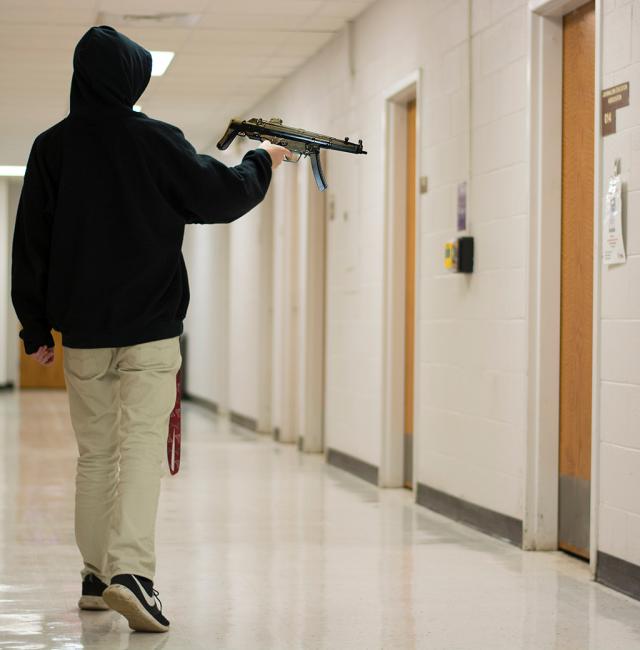
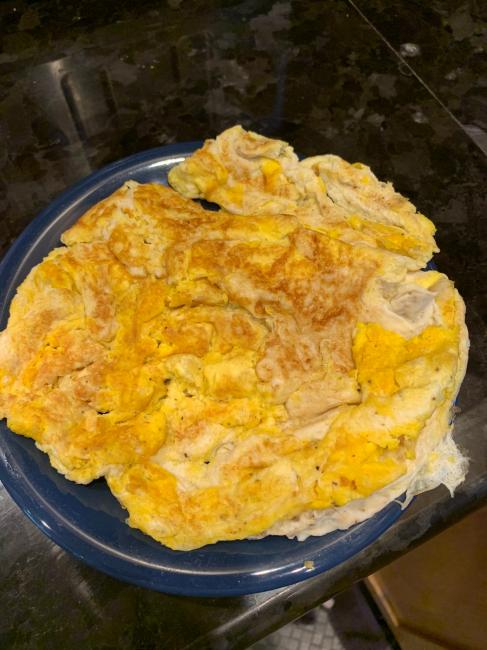
 I
I